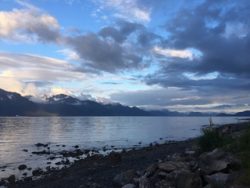New video focuses on ÀÖ»¢Ö±²¥'s acidifying oceans
September 11, 2019
Paula Dobbyn
907-274-9698

The rise in ocean acidification (OA) is tied to higher levels of carbon dioxide being released into the atmosphere by fossil fuel burning and deforestation. As carbon dioxide (CO2) is released, about one-third gets absorbed by the ocean, making it more acidic.
Northern waters, like those around ÀÖ»¢Ö±²¥, are particularly susceptible to OA because cold water can absorb more CO2. That’s why ÀÖ»¢Ö±²¥ and other high latitude seas will likely see the effects of OA sooner than areas farther south. The chemistry of OA is well understood, but how this process affects fish and other marine resources is more of a mystery. Given ÀÖ»¢Ö±²¥â€™s nearly two-billion-dollar seafood industry, and the state’s reliance on fish, marine mammals, shellfish and other ocean products for subsistence and recreation, the risks of OA in ÀÖ»¢Ö±²¥ are profound.
ÀÖ»¢Ö±²¥ assistant professor Amanda Kelley is a top researcher on ocean acidification’s effects in ÀÖ»¢Ö±²¥. ÀÖ»¢Ö±²¥ Sea Grant has funded studying how shellfish react to different levels of OA.
follows Kelley in Seward and Kachemak Bay to better understand her research and how tribal members and other citizen scientists are getting involved in monitoring OA. For more information contact Paul Dobbyn at paula.dobbyn@alaska.edu or 907-274-9698.


